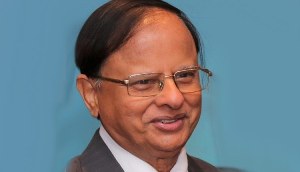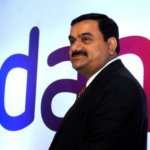Bangalore: Principal Secretary to the Prime Minister, Dr P K Mishra said investments in financing mechanisms, institutional development, and capacity-building are intended to deliver measurable outcomes. Dr Mishra asserted that one of the most significant achievements of India’s evolving disaster risk management system is the reduction in disaster-related mortality.
Dr P.K. Mishra was addressing during the Silver Jubilee Foundation Day of the Centre for Public Policy (CPP) at Indian Institute of Management, Bangalore.
He explained how the Gujarat earthquake recovery program with a comprehensive approach helped transform the disaster management system of the country. Dr P.K Mishra emphasised that the combined effect of improved early warning systems, strengthened institutions, better planning, and more responsive financing, mortality rates have shown a consistent decline across both rapid-onset and slow-onset hazards. This is in line with the core commitment under the Sendai Framework for Disaster Risk Reduction, to which India is a signatory, Dr Mishra added.
Delving on the theme of his lecture on “From Gujarat to Myanmar: Evolution of India’s Disaster Management Policy and Practice during the last 25 Years”, Dr P.K. Mishra drew inspiration from PM Narendra Modi’s vision of ‘Viksit Bharat’. He reflected on how India’s disaster management policies and practices have evolved over the last two or three decades.
Dr P.K Mishra said that, the practice of disaster risk management in India had multiple transitions. Dr Mishra referenced in his deliberation, the 1991 Odisha Super Cyclone, the 2001 Gujarat earthquake, and the 2004 Indian Ocean tsunami, which resulted in several lessons. Dr Mishra said that there were also other events, such as the Latur earthquake of 1993 and the Kashmir earthquake of 2005.
In addition, global policy processes such as the International Decade for Natural Disaster Reduction (IDNDR) 1990-1999, the Hyogo Framework for Action (HFA) 2000-2015 and the Sendai Framework 2015-2030 had greatly influenced our thinking and practice, he further said.
On the vital front of Comprehensive Response and Reconstruction, and Long-term Perspective, Dr. P.K Mishra highlighted on effective and decisive steps for institutionalising disaster management through a legal framework, regulatory reforms, training and a knowledge network. building regulations and hazard resistant construction. Talking on the significance of the Gujarat Initiative, Dr Mishra enlisted the multifarious activities undertaken by Gujarat State Disaster Management Authority (GSDMA), going far beyond response and relief, in the broad areas of Earthquake reconstruction work; Formulation of policies and legislation; Preparation of disaster management plans; Preparedness initiatives; Capacity building; Mitigation measures; and Awareness and community preparedness, among others.
Delving on “Finance as a Foundation: The Evolution of Disaster Risk Financing”, Dr P.K Mishra emphasised that one of the most significant conceptual contributions of the new financing architecture is the recognition that disaster management comprises differentiated yet interdependent functions – response and relief, recovery and reconstruction, preparedness, and mitigation.
Dr P.K. Mishra underlined that under Prime Minister Narendra Modi India has emerged as a key global responder in Humanitarian Assistance and Disaster Relief (HADR) operations, reflecting its growing commitment to regional and international solidarity in times of crisis. Through its trained and equipped National Disaster Response Force (NDRF) and armed forces, India has extended timely disaster response support to countries such as Nepal (2015 earthquake), Türkiye (2023 earthquake) and Myanmar (2025 earthquake).
Dr P.K. Mishra highlighted that a promising example of institutional innovation led by India is the Coalition for Disaster Resilient Infrastructure (CDRI), a multilateral platform established to promote resilience in infrastructure systems globally. Conceived and hosted by India, CDRI represents a new generation of specialized institutions that address a focused domain – resilient infrastructure – while facilitating global collaboration and knowledge exchange.






